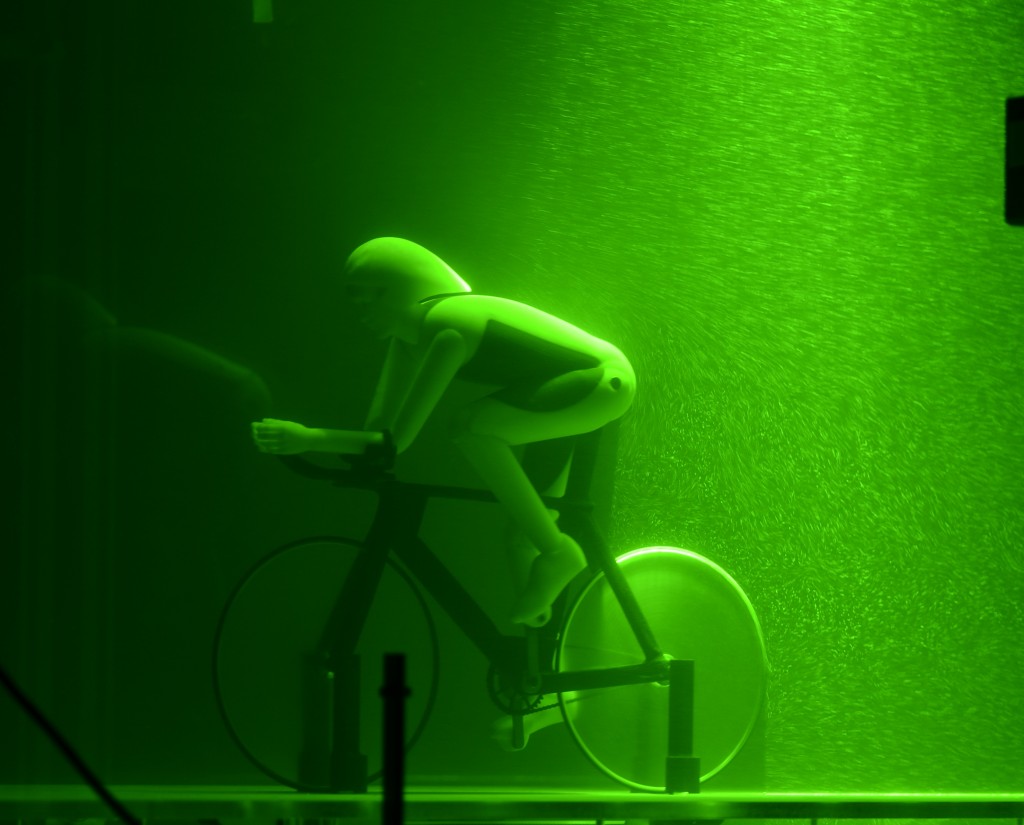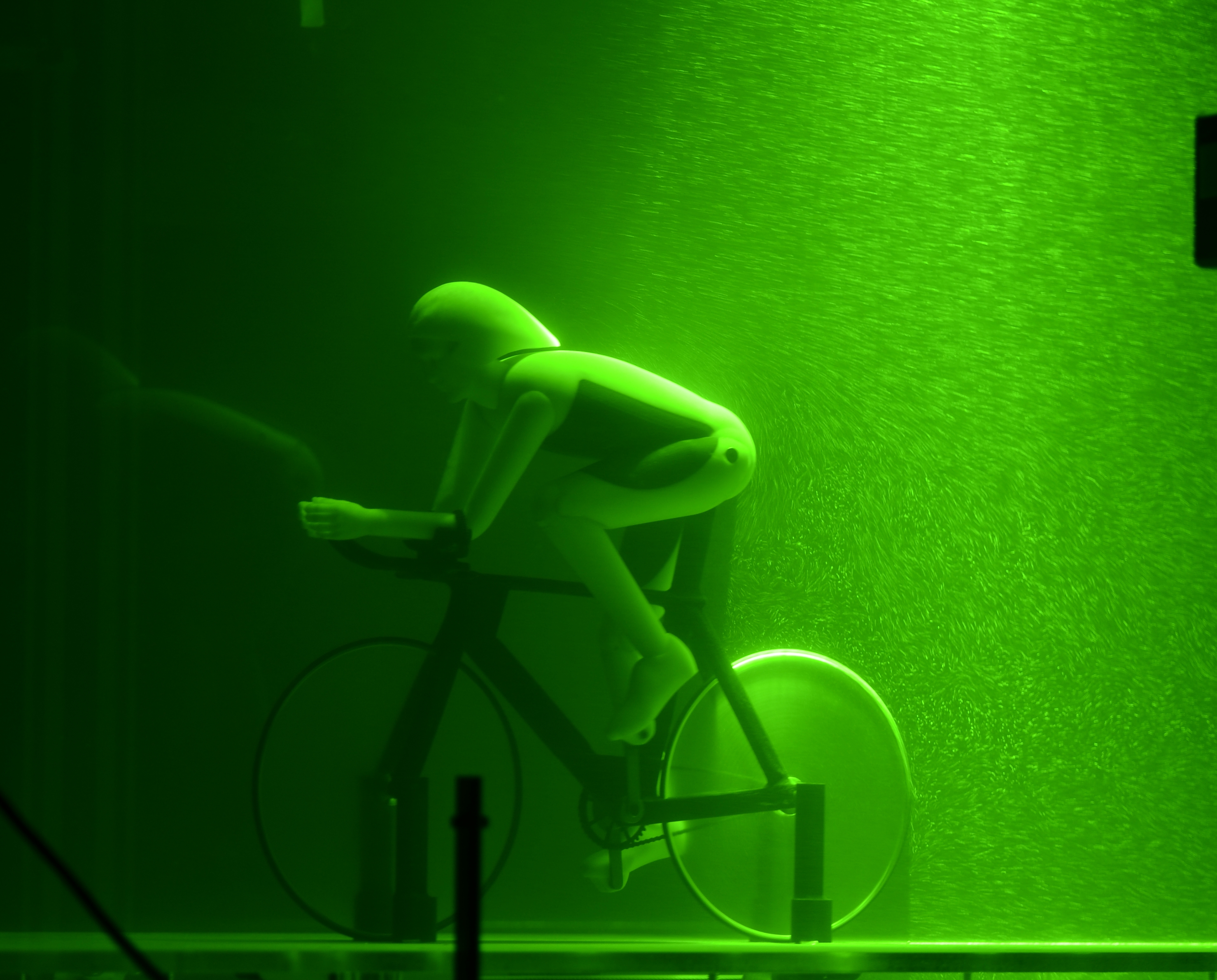At Monash we built a 1:4.5 scale-model cyclist that can pedal in order to study the dynamics of the cyclist's wake while pedalling and also to look at the quasi-steady assumption made in [1. T. N. Crouch, D. Burton, N. A. T. Brown, M. C. Thompson and J. Sheridan (2014). Flow topology in the wake of a cyclist and its effect on aerodynamic drag . Journal of Fluid Mechanics, 748, pp 5-35 doi:10.1017/jfm.2013.678].
Here, we use laser illumination to highlight the paths of particles in the wake of the pedalling cyclist. This allows us to see separation points and vortical structures, giving us an immediate sense of some of the key flow features. Going beyond this, we could use the laser-particle system to perform PIV, where the particles are tracked in time to give their velocities. You can see some of this work in these papers (ISEA2016, ACLDFMC7).




